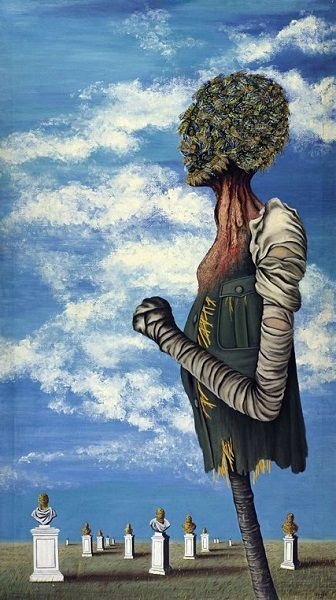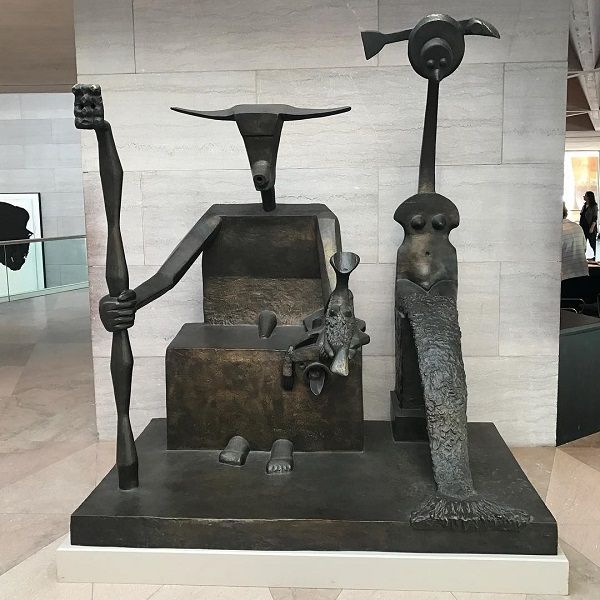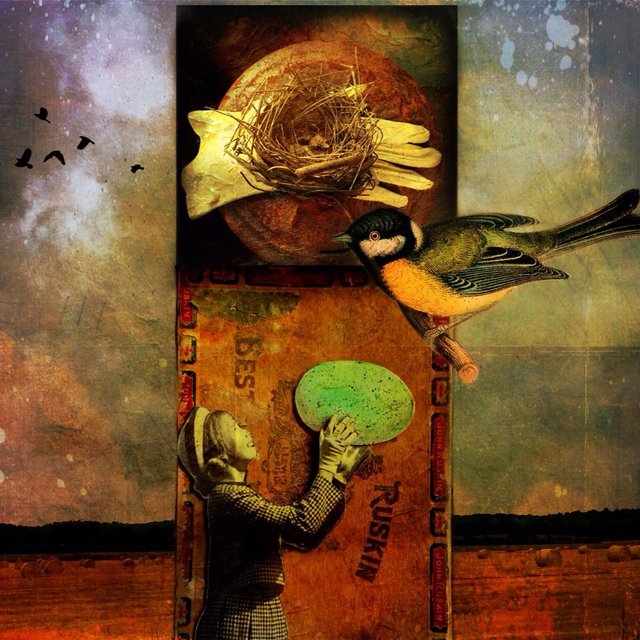Introduction of Surrealism

The Lovers by Rene Magritte
In the course of history, sometimes there are movements and phenomena that overturn all the established understandings. In the twenties of the 20th century there was such a movement that changed the definition of the word "art". Surrealism combines the influences of its transcendents - Dadaism and Cubism - in order to bring something unseen in the world of art. The term "surrealism" was introduced in 1917 by Guillaume Apollinaire. Initially the movement is rejected, but its eccentricity and the new techniques introduced through it open the way for a different form of art. Surrealism is rooted in the early Dada movement. This is a movement whose creators express their disgust from the war and from life as a whole. These authors want to show that European culture has faded away and lost its importance by creating works of anti-art. The basic idea is to go against traditional art and everything it represents. The name "dada" symbolizes baby speech to show how pointless the world of art seems to them. From then on, it is often a zealous protest. Although the movement began to be an expression of non-formality, Picabia declared Dada as a dead movement in 1922, saying it had become too organized.

The Virgin Spanking the Christ Child
by Max Ernst
Although declared to have died, Dada gave the foundations of another, organized wave of art. Surrealism originated in the 20s of the 20th century in Paris after the First World War. We can trace its roots to the Dada movement, but its means of expression are not so fierce and they are more artistically oriented. Surrealism originated in the works of writers and poets. French poet André Breton is known as the "pope of surrealism". He wrote the "Surreal Manifesto" in 1924, in which he attempted to describe his desire to combine consciousness and unconscious mind into a new absolute reality. In this book, he expresses the belief that rational thinking suppresses creative power and imagination and negatively affects artistic expression. He described surrealism as "spontaneous writing." The first exhibition of surrealist works of art took place in 1925, but initially the movement was rejected in Europe. Breton organized an international exhibition of surrealist works in New York, which takes the role of the center of the genre by replacing Paris. Surrealist ideas have given a new life and influenced young US and Mexican artists. One of the main ideas of surrealism is non-formism. It is not as extreme as that of Dada. Breton says that "pure mental automatism" is another fundamental principle of this movement in art. He believes real surrealists do not actually have talent but simply express their thoughts as they have arisen in their minds. Surrealists use techniques that have never been used in the world of art before.

Golconda, by Rene Magritte
They believe in the pure eye, believe that art is created by the unconscious portion of the human psycho. Most movement representatives work with psychology and fantastic imaging techniques, based their art on memories, feelings, fantasies and dreams. Some of them experiment with hypnotic techniques and drugs to get into the world of unconscious where they are looking for its symbols that do not always emerge into consciousness. Such attempts with the subconscious universe were the reason why Breton compared the surrealists with scientists who "lead the study to new heights and methods of exploration." They perceive the concepts of Sigmund Freud and his psychoanalysis, through which images and feelings of the subconscious are brought into the mind. Freud says, "A dream that is not interpreted is like a letter that is not open." Surrealists integrate this idea into their works. Two different types of interpretations of his ideas lead to two strands of surrealism: automatism and loyalty. Automates base their work on their feelings and are less rational and analytical in their works. They believe that automatism is the automatic way in which the subconscious reaches consciousness but doesn’t believe that the images they create have a certain meaning and that they have to be interpreted in a certain way. They argued that abstract art is the only way to convey the images of the unconscious and the lack of strictly distinct form is a form of rebellion against traditional art. In these peculiarities they are very close to the Dadaists. The surrealists of the Christian believe that the images of the subconscious have a definite meaning. They believe that the images are a metaphor, which, if studied, can make the world clearer. The followers of this movement of surrealism believe that the language of the subconscious world is in the form of images. Although their styles are similar, automakers see art as the witnesses see meaning.

Toyen’s “La Guerre” (1945)
Surrealism is influenced by Expressionism and Cubism, and its representatives use Danish techniques. However, there are some techniques and methods that are typical and are introduced within the movement - levitation, changing the scale of the object, transparency and repeating of the images are used for the construction of a typical surrealism image. Another, typical of the means of expression of surrealism, is the collating or superimposing of images that are incompatible with reality and can’t be combined. De La Croa describes this mode as “as beautiful as an umbrella and a sewing machine placed on an operating table.” Combining images in this way is used by surrealists to show a metaphor or to deliver a particular message to viewers. Many of the designers draw quite realistically, but they always have at least one image in the painting, shifted from a typical location that changes the panting completely. Another feature of the genre is that most works have a laconic name that points to the problem posed clearly and directly. René Magritte uses traditional techniques to draw pretty realistic images in the field of surrealism. As a poster and poster designer, he has to learn to paint more realistic imagery. His work mostly depicts scenes from everyday life, but deliberately changes some aspects of the works to convey through them a specific message. He is able to transform boring images into unusual paintings. His own image, dressed in a black suit and a bomb, often appears in his works. Many of his paintings carry an ominous and furious message with emphasis on the objects that are in the background.

Capricorn, by Max Ernst
Although many surrealists are studying traditional art, some of them are self-taught artists. Max Ernst is one of them. He has graduated philosophy and psychology. He thinks that the real art that comes from the subconscious are paintings drawn by people who have lost their minds. He even visits psychiatry to get in touch with these first-hand scenes. His paintings often depict representatives of the plant, animal, human and mineral kingdoms, detached from biology. In 1925 he created his own technique - "frottage" to express his feelings. This technique is the rubbing of an object in a sheet of paper that can later be used for collages.
Most of my digital collages are a bit surreal. They just kind of emerge with not a lot of deep analytical thought behind them. The best ones almost create themselves. I wonder what they would reveal about my psyche. 😀

Haha, yes, it is a little risky because this method is entirely on an unconscious basis and can reveal some very dark secrets you hide from yourself. :D
Very good collage!
Thank you! Sometimes my kids tell me that my collages are a little creepy. Ha...maybe I have a creepy side and don’t know it.
I resteemed this. Thanks for the art history lesson!
I love surrealism. I read an article about lesser known female surrealists and found the work of Dorothea Tanning, so interesting. I studied art history at uni, so I really appreciate this post. I am a new follower as well. Good job.
I really don't know her. Thank you for mention her. I will read information about her :)
Thanks, I followed you back you have really interesting stuff :)
i love the surrealism. Influenced a lot my works.
Hehe, nice. I have some stuff you have made. You have interesting dark humor :)
Thanks @goldflesh by this walk around the surrelism, with very good images.
Have a nice day!
Thank you :)
You got a 8.35% upvote from @postpromoter courtesy of @godflesh! Want to promote your posts too? Check out the Steem Bot Tracker website for more info. If you would like to support development of @postpromoter and the bot tracker please vote for @yabapmatt for witness!
thanks
good post, I like your post ..
I need your support please visit my blog https://steemit.com/@muliadi
if you like my post please give upvote, resteem &follow me.
thank you, keep on steemit.
:)
The Lovers has a sort of Silent Hill vibe going on
interesting